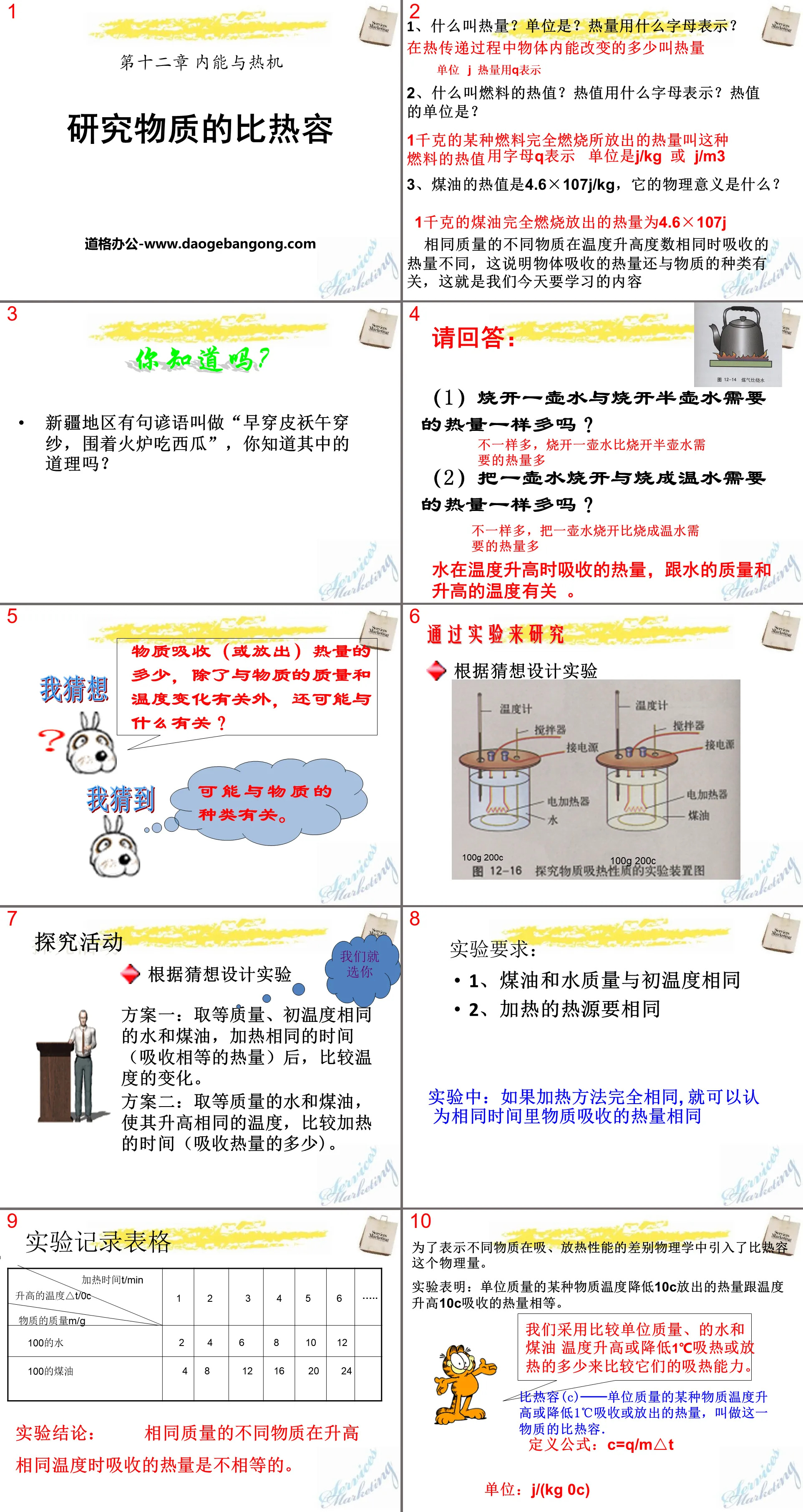People's Education Edition Physics for Grade 8, Volume 2
People's Education Edition Ninth Grade Physics Complete Book
Shanghai Science Edition Ninth Grade Physics
People's Education Edition Physics for Grade 8, Volume 1
Beijing Normal University eighth grade physics volume one
Shanghai Science Edition 8th Grade Physics
Lu Jiao Edition Ninth Grade Physics Volume 1
Beijing Normal University Ninth Grade Physics Volume 1
Guangdong and Shanghai Edition Ninth Grade Physics Volume 1
Lu Jiao Edition Ninth Grade Physics Volume 2
Lu Ke Edition High School Physics Compulsory Course One
People's Education Press High School Physics Compulsory Course II
Beijing Normal University Ninth Grade Physics Volume 2
Lu Jiao Edition Eighth Grade Physics Volume 2
Guangdong and Shanghai version of eighth grade physics volume 2
Lu Jiao edition eighth grade physics volume 1

| Category | Format | Size |
|---|---|---|
| Guangdong and Shanghai Edition Ninth Grade Physics Volume 1 | pptx | 6 MB |
Description
"Studying the Specific Heat Capacity of Substances" Internal Energy and Heat Engine PPT Courseware 2
1. What is heat? What is the unit? What letters represent calories?
The amount that can be changed in an object during heat transfer is called heat
Unit J, heat is represented by Q
2. What is the calorific value of fuel? What letters represent calorific value? What is the unit of calorific value?
The heat released by the complete combustion of 1 kilogram of a certain fuel is called the calorific value of the fuel.
Represented by the letter q, the unit is J/Kg or J/m3
3. The calorific value of kerosene is 4.6×107J/Kg. What is its physical meaning?
The heat released by complete combustion of 1 kilogram of kerosene is 4.6×107J
Different substances of the same mass absorb different amounts of heat when the temperature rises by the same degree. This shows that the heat absorbed by the object is also related to the type of substance. This is what we are going to learn today.
Inquiry activities
Design experiments based on conjectures
Option 1: Take water and kerosene of equal mass and the same initial temperature, heat them for the same time (equal heat absorption), and compare the temperature changes.
Option 2: Take equal masses of water and kerosene, raise them to the same temperature, and compare the heating time (the amount of heat absorbed).
Experimental requirements:
1. The quality of kerosene and water is the same as the initial temperature
2. The heating sources should be the same
In the experiment: If the heating methods are exactly the same, it can be considered that the heat absorbed by the substance in the same time is the same.
In order to express the difference in the heat absorption and release properties of different substances, the physical quantity of specific heat capacity is introduced in physics.
Experiments show that the heat released when the temperature of a unit mass of a certain substance decreases by 10C is equal to the heat absorbed by a 10C increase in temperature.
We compare the heat absorption capacity of water and kerosene by comparing how much they absorb or release heat when the temperature rises or decreases by 1°C per unit mass.
Specific heat capacity (C) - The amount of heat absorbed or released by a unit mass of a substance that increases or decreases its temperature by 1°C, is called the specific heat capacity of this substance.
Definition formula: C=Q/m△t
Unit: J/(Kg 0C)
The specific heat capacity of a substance is related to the type of substance. The specific heat capacities of different substances are generally different;
Water has the largest specific heat capacity;
The specific heat capacity of a substance is not only related to the substance and type, but also related to the state of the substance. For example, the specific heat capacity of water and the specific heat capacity of ice are not equal;
The specific heat of water is___________
Its physical meaning is:_______________
Specific heat capacity is a characteristic of matter, just like density is a characteristic of matter. The specific heat capacity of the same substance in the same state is constant and does not change with the amount of heat absorbed or released by the object, its mass, or the rising or falling temperature.
If the temperature of 5Kg of water increases by 10°C, how much heat will be absorbed?
1. To heat 2kg of water at 20°C to 100°C, how much heat must be supplied?
Known: c water = 4.2 × 103J/(kg · ℃), m = 2kg
Initial temperature t1=20 ℃, final temperature t2=100 ℃
Request: Q suck
Solution: According to Q=cm△t=cm(t-t0)
Q suction = 4.2×103J/(kg · ℃) ×2kg×(100-20)℃
=6.72×105J
A steel ingot with a mass of 100kg and the temperature drops from 1.3×103 ℃ to 30 ℃, how much heat is released?
Known: c steel=0.46×103J/(kg · ℃), m=100kg
Initial temperature t1= 1.3×103 ℃, final temperature t2=30 ℃
Request: Q release
Solution: According to Q=cm△t=cm(t0-t)
Q discharge = 0.46×103J/(kg · ℃) ×100kg×(1300-30)℃
=5.84×107J
Compare to see who is the smartest?
1. People choose to use water to cool their engines and heat their engines. Why is this?
2. There is a large temperature difference between day and night in desert areas, but not much in coastal areas. What is the reason for this?
Water has a large specific heat capacity. Under the conditions of a certain quality, water absorbs (or releases) a lot of heat when it rises (or decreases) to a certain temperature. Using coolant or heating with water has a good effect.
It can be seen from the specific heat capacity table that among various substances, water has the largest specific heat capacity. This means that the temperature of water changes less when it is heated or cooled.
Because the specific heat capacity of seawater is large and that of sand and gravel is small, seawater absorbs or releases the same heat as sand and gravel, and the temperature rises or falls less. When exposed to the same sunlight during the day, the temperature change of seawater is smaller. The temperature in coastal areas rises more slowly than in inland areas. It releases heat at night and the temperature in coastal areas decreases less. Therefore, during the day, the temperature changes little in coastal areas and large in inland areas. Similarly, inland areas are hotter than coastal areas in summer and colder inland areas during winter.
practise:
1. The specific heat capacity of water is 4.2×103J/(kg·℃). Heating water with a mass of 4kg from 20℃ to 70℃ requires absorbing _____J heat. If half of the water is poured out, its specific heat capacity will be _____J/(kg.℃)
2. The specific heat capacity of water is twice that of kerosene. If the mass ratio of water and kerosene is 1:2, and the ratio of heat absorbed is 2:3, then the ratio of the rising temperatures of water and kerosene is ()
A:3:2 B:2:3 C:4:3 D:3:4
Thermal balance relationship: Q release = Q absorb
When two objects with different temperatures are put together, the high-temperature object will release heat and the temperature will decrease; the low-temperature object will absorb heat and the temperature will increase; finally, the two objects have the same temperature, which is called thermal equilibrium.
Keywords: internal energy and heat engine teaching courseware, research on the specific heat capacity of matter teaching courseware, Guangdong and Shanghai edition ninth grade physics PPT courseware download, ninth grade physics slide courseware download, internal energy and heat engine PPT courseware download, research on the specific heat capacity of matter PPT courseware Download, .PPT format;
For more information about the PPT courseware "Internal Energy and Heat Engine to Study the Specific Heat Capacity of Substances", please click the "Internal Energy and Heat Engine ppt to Study the Specific Heat Capacity of Substances" ppt tag.
"Studying the Specific Heat Capacity of Substances" Internal Energy and Heat Engine PPT Courseware 4:
"Studying the Specific Heat Capacity of Substances" Internal Energy and Heat Engine PPT Courseware 4 The amount of heat absorbed by a certain substance when it heats up may be related to what factors, and what is the relationship? Does it take the same amount of heat to boil a full pot of water as it does to boil a half pot? Not the same amount, the amount of heat required to fill a pot of water...
"Studying the Specific Heat Capacity of Substances" Internal Energy and Heat Engine PPT Courseware 3:
"Studying the Specific Heat Capacity of Matter" Internal Energy and Heat Engine PPT Courseware 3 Teaching Objectives: 1. Understand the concept of specific heat capacity, know that specific heat capacity is a property of matter, a physical quantity that reacts to the endothermic and exothermic properties of matter, and know the units and readings of specific heat capacity Law and meaning. 2.Specific heat..
"Studying the Specific Heat Capacity of Substances" Internal Energy and Heat Engine PPT Courseware:
"Studying the Specific Heat Capacity of Substances" Internal Energy and Heat Engine PPT Courseware Learning Objectives 1. Understand the concept of specific heat capacity, know that specific heat capacity is a characteristic of a substance, a physical quantity that reflects the heat absorption and release properties of a substance, know that the unit of specific heat capacity is J/(kg.℃) and that the specific heat capacity unit...
File Info
Update Time: 2024-08-16
This template belongs to Physics courseware Guangdong and Shanghai Edition Ninth Grade Physics Volume 1 industry PPT template
"Studying the Specific Heat Capacity of Substances" Internal Energy and Heat Engine PPT Courseware 2 Simple campus recruitment activity planning plan summary enterprise and institution recruitment publicity lecture PPT template is a general PPT template for business post competition provided by the manuscript PPT, simple campus recruitment activity planning plan summary enterprise and institution recruitment promotion Lecture PPT template, you can edit and modify the text and pictures in the source file by downloading the source file. If you want more exquisite business PPT templates, you can come to grid resource. Doug resource PPT, massive PPT template slide material download, we only make high-quality PPT templates!
Tips: If you open the template and feel that it is not suitable for all your needs, you can search for related content "Studying the Specific Heat Capacity of Substances" Internal Energy and Heat Engine PPT Courseware 2 is enough.
How to use the Windows system template
Directly decompress the file and use it with office or wps
How to use the Mac system template
Directly decompress the file and use it Office or wps can be used
Related reading
For more detailed PPT-related tutorials and font tutorials, you can view: Click to see
How to create a high-quality technological sense PPT? 4 ways to share the bottom of the box
Notice
Do not download in WeChat, Zhihu, QQ, built-in browsers, please use mobile browsers to download! If you are a mobile phone user, please download it on your computer!
1. The manuscript PPT is only for study and reference, please delete it 24 hours after downloading.
2. If the resource involves your legitimate rights and interests, delete it immediately.
3. Contact information: service@daogebangong.com
"Studying the Specific Heat Capacity of Substances" Internal Energy and Heat Engine PPT Courseware 2, due to usage restrictions, it is only for personal study and reference use. For commercial use, please go to the relevant official website for authorization.
(Personal non-commercial use refers to the use of this font to complete the display of personal works, including but not limited to the design of personal papers, resumes, etc.)
Preview










